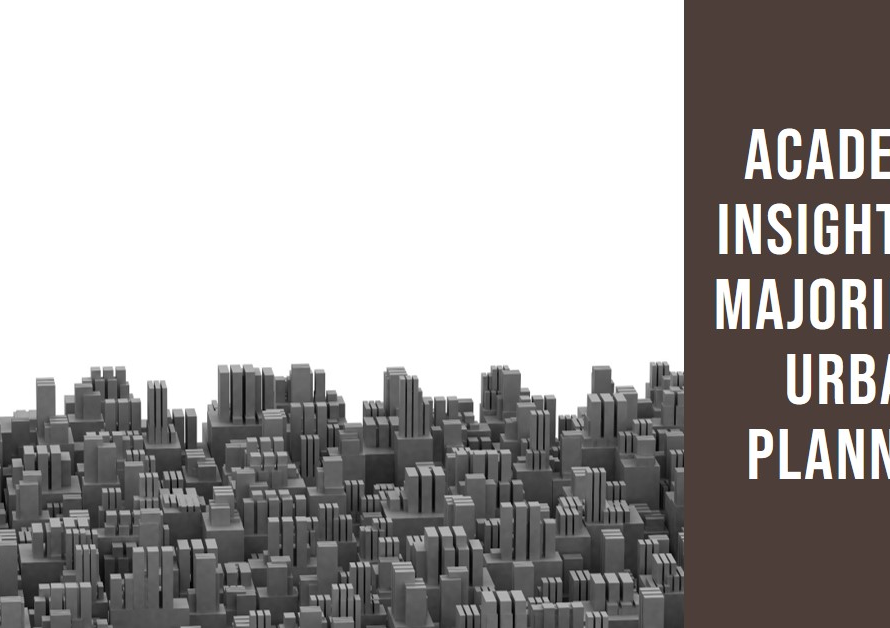
Table of Contents
Defining urban planning and its importance
Urban planning is the art and science of designing cities and communities to ensure sustainable, efficient, and equitable development. It encompasses various aspects such as land use, transportation, infrastructure, housing, and environmental considerations. Urban planning plays a crucial role in shaping cities into vibrant places that meet the needs and aspirations of their residents.
One key importance of urban planning is achieving more livable and inclusive communities. By carefully studying the social dynamics of a city and understanding the diverse needs of its population, urban planners can create spaces that promote social interaction, foster community engagement, and enhance quality of life for all residents. Inclusivity means ensuring that everyone has equal access to basic amenities like healthcare facilities, schools, public transportation services, parks, and recreational areas regardless of their income or background.
Additionally, urban planning helps manage growth in a sustainable manner. Cities are constantly evolving entities with expanding populations and changing demands. Without proper planning mechanisms in place to guide development decisions regarding land use patterns or infrastructure investments accordingly; could lead to inefficient resource allocation or adverse impacts on the environment as well as increased pollution levels. By anticipating future changes through data-driven analyses; policymakers can make informed decisions about when it’s appropriate to build new roads or expand public transit systems – ensuring that these choices support long-term sustainability goals while improving overall living conditions.
In conclusion; by promoting inclusivity while managing growth sustainably; urban planners are instrumental in creating cities where people can thrive economically; socially; culturally; and environmentally – offering opportunities for all citizens to enjoy a peaceful environment
History: Evolution of urban planning over time
Throughout history, urban planning has evolved in response to various societal and environmental factors. In ancient civilizations such as Mesopotamia and Egypt, the layout of cities was heavily influenced by their religious beliefs, with monumental buildings and temples positioned at the center. As societies became more advanced, urban planning took on a utilitarian approach in ancient Greece and Rome, where streets were laid out in a grid system to promote efficient transportation and trade.
During the Middle Ages, however, urban planning took a backseat as cities grew organically without much consideration for infrastructure or public spaces. It wasn’t until the Renaissance period that there was a renewed interest in city design. The concept of perspective, popularized by artists during this time, began to shape how cities were planned with an emphasis on aesthetics and harmony. This trend continued into the Baroque period where ornate gardens and grand boulevards were incorporated into urban layouts.
The Industrial Revolution brought about drastic changes to urban planning as rapid urbanization gave rise to overcrowding and unsanitary living conditions. This led to the emergence of public health movements which advocated for better housing standards and the creation of public parks for recreational purposes. The advent of automobiles also had a significant impact on modern urban planning by necessitating the construction of well-designed road networks.
Today’s urban planners face new challenges such as sustainable development methods and accommodating population growth while preserving historical heritage. With advances in technology like Geographic Information Systems (GIS), planners can now accurately analyze data on land usage patterns, demographics
Goals: Objectives and aims of urban planning
Urban planning plays a crucial role in shaping cities and communities for the better. One of the primary goals of urban planning is to create sustainable and livable environments. This involves finding a balance between economic growth, social equity, and environmental protection. Urban planners aim to design cities that are efficient, inclusive, and resilient. They work towards creating neighborhoods that provide accessible housing options, walkable streets, and well-connected transportation systems.
Another key objective of urban planning is to promote economic development and improve quality of life. Urban planners strive to attract businesses and investment by creating favorable conditions such as infrastructure development, zoning regulations, and land use policies. By strategically allocating resources and planning for mixed-use developments, they aim to create vibrant urban centers that foster entrepreneurship, job creation, and innovation.
Additionally, urban planning aims to enhance social equity by ensuring equal access to essential services such as education, healthcare facilities, green spaces, affordable housing units, public transportation networks etc . Planners work towards reducing inequalities through techniques like land-use zoning laws which prevent the segregation or clustering of different socio-economic groups within a city. The ultimate aim is to create inclusive communities where inhabitants from all walks of life can prosper together.
In conclusion – Urban planning encompasses various goals including sustainability promotion ,economic development , enhancing social equality among others.Through careful spatial organization,to bring about economic efficiencies,inclusionary zoning techniques etc – cities can be transformed into cohesive spaces where people thrive economically,socially while also protecting natural resources
Components: Key elements of urban planning
One of the key components of urban planning is land use. This involves determining how different areas of a city will be allocated for residential, commercial, industrial, and recreational purposes. By carefully considering land use, urban planners can create vibrant and livable communities that meet the needs of their residents.
Another important component is transportation planning. Developing effective transportation systems is critical for managing traffic congestion and ensuring efficient movement within a city. Urban planners must consider factors such as public transit networks, road infrastructure, cycling lanes, and pedestrian walkways to create sustainable and accessible transportation options.
In addition to land use and transportation, social equity is also a crucial element of urban planning. It entails ensuring that all members of a community have equal access to services, amenities, and opportunities. Urban planners must consider various aspects such as affordable housing availability, accessibility for people with disabilities, equitable distribution of green spaces and recreational facilities to ensure fairness across all socioeconomic groups within the city. By prioritizing social equity in urban planning efforts can help foster inclusive communities where everyone has an opportunity to thrive
Challenges: Common obstacles faced in urban planning
Challenges are an integral part of urban planning, as the complex nature of cities and their ever-evolving needs can present significant obstacles. One common challenge is managing population growth while ensuring sufficient infrastructure and services. With urban populations expanding rapidly, it becomes crucial for planners to allocate resources wisely and plan for future needs. This requires a delicate balance between meeting current demands without compromising the ability to adapt and accommodate future growth.
Another major obstacle in urban planning is addressing socio-economic disparities within cities. While cities are often seen as centers of economic development and opportunity, they also face issues related to income inequality, access to affordable housing, healthcare, education, and employment opportunities. Balancing the need for economic growth with social equity is a complex task that requires innovative solutions based on community engagement and collaboration. Efforts must be made to prioritize inclusive policies that promote equal access to resources and opportunities for all residents.
In conclusion, challenges faced in urban planning are varied but interconnected. By understanding these obstacles and seeking innovative solutions that consider long-term sustainability along with social equity, urban planners can help shape vibrant cities that meet the needs of diverse communities while offering a high quality of life for all residents. Despite the complexities involved, overcoming these challenges can lead to well-planned cities that thrive economically while ensuring social cohesion and environmental preservation.
Benefits: Positive impacts of effective urban planning
Effective urban planning can have numerous positive impacts on a city and its residents. One of the key benefits is improved quality of life. By carefully designing the layout of a city, urban planners can create spaces that are pedestrian-friendly, with ample green spaces, parks, and recreational areas. This allows for a healthier lifestyle, as people are encouraged to walk or bike instead of drive, and have access to places where they can exercise and relax.
Another important impact of effective urban planning is increased economic growth and development. Well-planned cities attract businesses and investment opportunities, leading to job creation and economic prosperity. Urban planning that focuses on mixed-use developments helps create vibrant neighborhoods with a mix of residential, commercial, and recreational spaces. This not only fosters social interaction but also ensures that amenities such as schools, hospitals, shops, and entertainment venues are easily accessible to all residents.
In summary, effective urban planning has far-reaching positive impacts on cities. It enhances the quality of life by creating livable spaces that promote physical activity and well-being. Additionally, it stimulates economic growth by attracting businesses and providing diverse opportunities for employment. By recognizing these benefits and investing in thoughtful urban planning strategies, cities can thrive while meeting the needs of their residents in an efficient and sustainable way.
Conclusion: The significance of urban planning
Urban planning plays a crucial role in shaping the future of our cities and communities. By carefully considering factors such as population growth, land use, transportation, and infrastructure development, urban planners ensure that cities are designed in a way that maximizes efficiency, sustainability, and quality of life for residents. Without effective urban planning, cities run the risk of becoming chaotic and disorganized, with inadequate infrastructure to meet the needs of its residents.
Furthermore, urban planning also has a significant impact on social equity and inclusivity. By strategically locating amenities such as parks, schools, healthcare facilities, and affordable housing options within easy reach of all neighborhoods, urban planners can create more equitable living conditions for diverse communities. This ensures that everyone has equal access to essential resources and opportunities regardless of their socioeconomic background or geographic location. Urban planning also allows for public participation in decision-making processes which improves local democracy by giving citizens an active say in shaping their own communities.
In conclusion,the significance of urban planning cannot be understated. From fostering sustainable development to promoting social equity and improving overall quality of life for residents – effective urban planning lays the foundation for thriving cities that can adapt to change while prioritizing the needs of its inhabitants. As we continue to face challenges such as rapid urbanization and climate change – it is imperative that we invest in innovative and inclusive urban planning practices to build resilient cities that can withstand these evolving realities. Ultimately,democratic inclusion combined with strategic thinking will lead us towards creating vibrant cities where people from different walks of life



